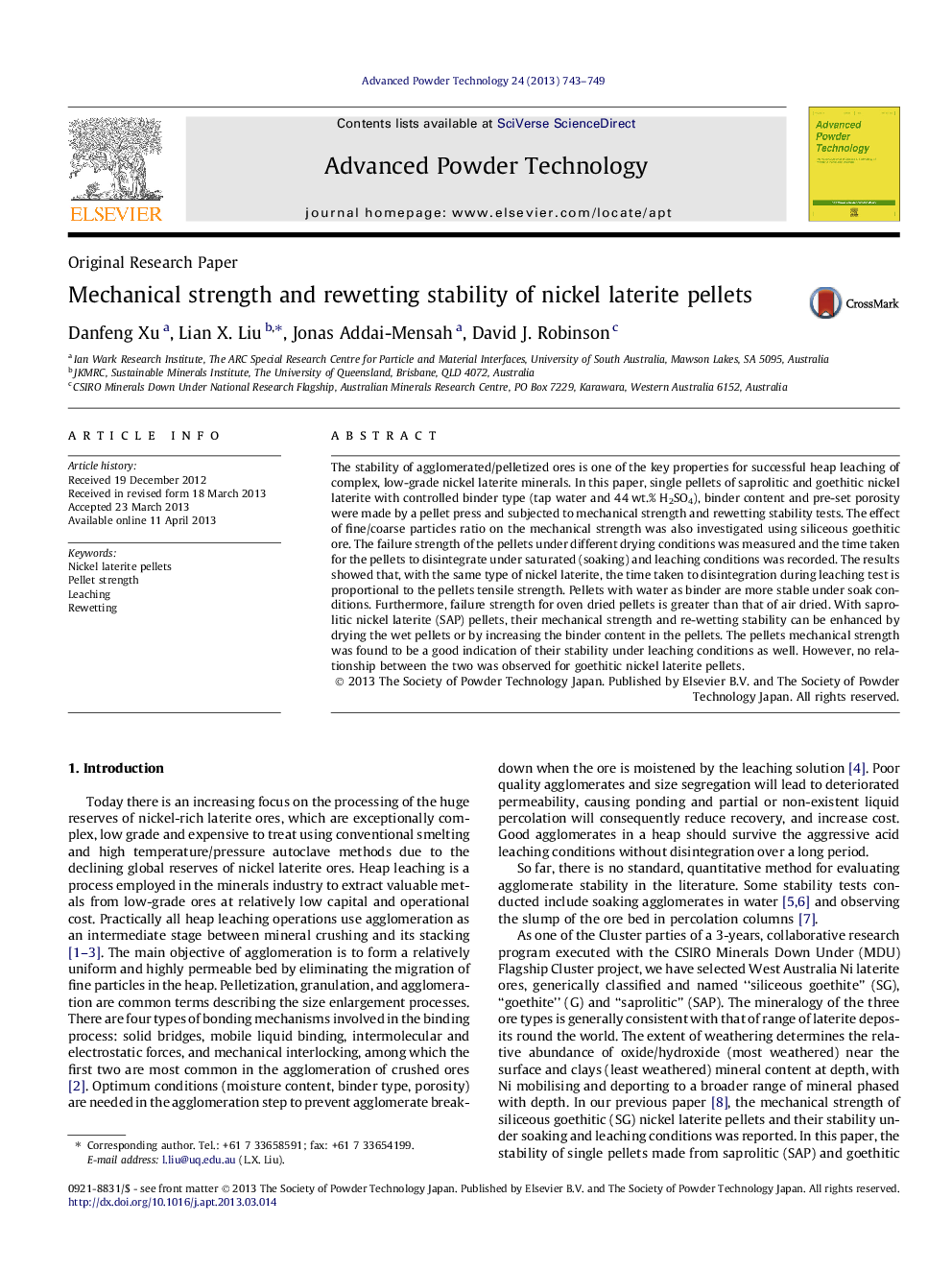| Article ID | Journal | Published Year | Pages | File Type |
|---|---|---|---|---|
| 144327 | Advanced Powder Technology | 2013 | 7 Pages |
•Water-bound pellets were generally stronger than the acid-bound ones.•The pellet mechanical strength and rewetting stability were mineralogy dependent.•The pellets rewetting stability is mainly dependent on the particle–particle bond types.
The stability of agglomerated/pelletized ores is one of the key properties for successful heap leaching of complex, low-grade nickel laterite minerals. In this paper, single pellets of saprolitic and goethitic nickel laterite with controlled binder type (tap water and 44 wt.% H2SO4), binder content and pre-set porosity were made by a pellet press and subjected to mechanical strength and rewetting stability tests. The effect of fine/coarse particles ratio on the mechanical strength was also investigated using siliceous goethitic ore. The failure strength of the pellets under different drying conditions was measured and the time taken for the pellets to disintegrate under saturated (soaking) and leaching conditions was recorded. The results showed that, with the same type of nickel laterite, the time taken to disintegration during leaching test is proportional to the pellets tensile strength. Pellets with water as binder are more stable under soak conditions. Furthermore, failure strength for oven dried pellets is greater than that of air dried. With saprolitic nickel laterite (SAP) pellets, their mechanical strength and re-wetting stability can be enhanced by drying the wet pellets or by increasing the binder content in the pellets. The pellets mechanical strength was found to be a good indication of their stability under leaching conditions as well. However, no relationship between the two was observed for goethitic nickel laterite pellets.
Graphical abstractFigure optionsDownload full-size imageDownload as PowerPoint slide
